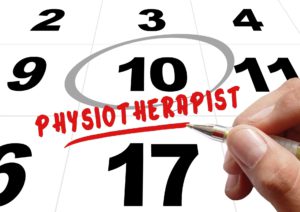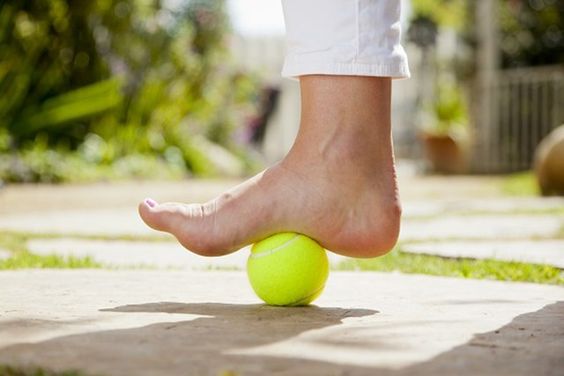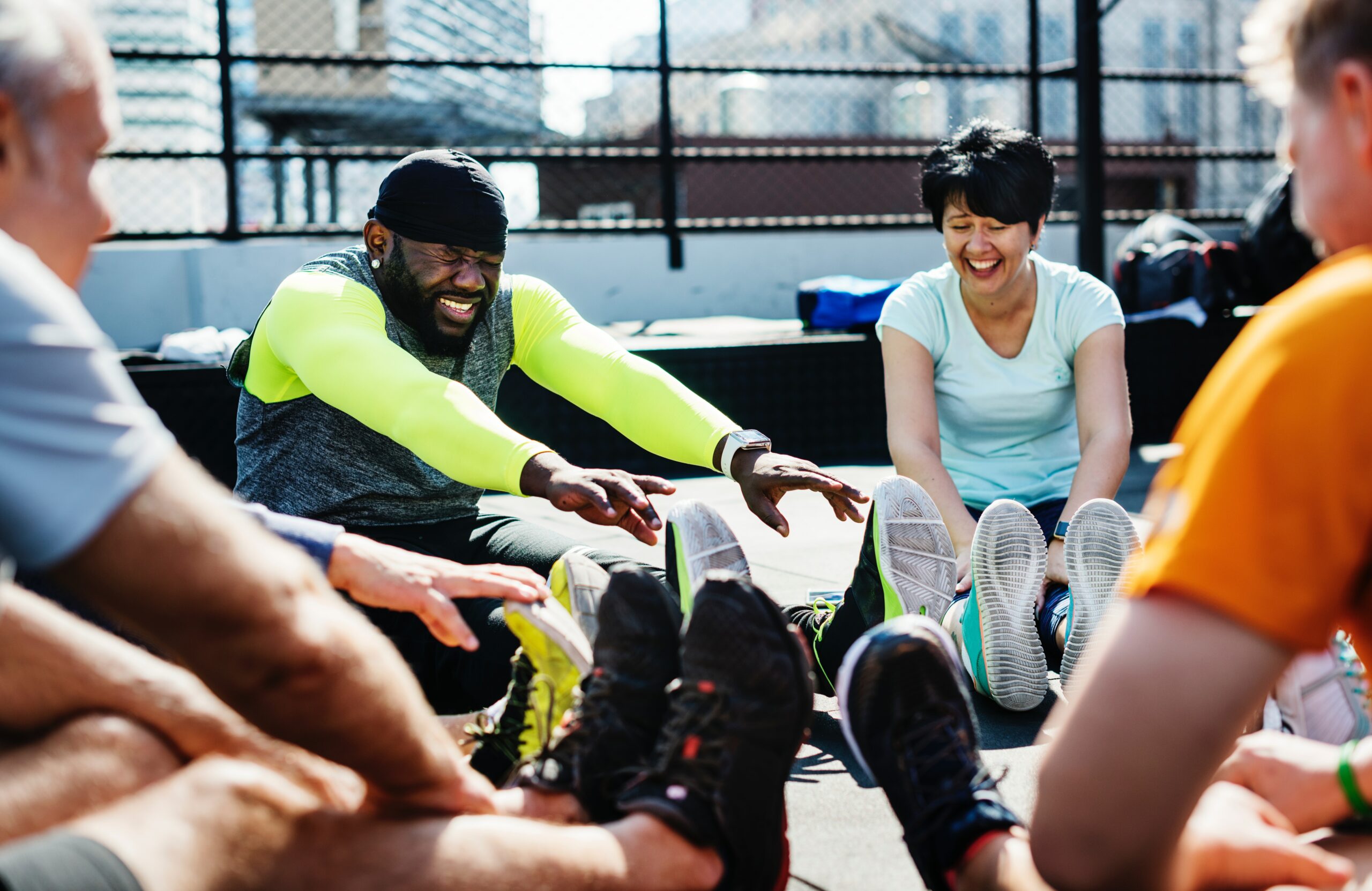It can be tricky to safely return to running after an injury as it is easy to re-injure yourself again. Every injury is different and every recovery process is very personal, so my best suggestion would be: Find a sports injury specialist (such as a physiotherapist) nearby for an assessment of your injury. And to get professional advice on the right rehabilitation program to get you back to running after an injury.
The right diagnosis first!

An accurate diagnosis from an “injury specialist” is the best starting point towards recovery. This to prevent you from being misled by similar symptoms of a different injury.
To give you an example: I was surfing online to find information on my heel pains and pretty quickly I found an injury with the exact same symptoms which was called a heel spur. After trying all kinds of home remedies that didn’t work, I finally went to a podiatrist. Here I was diagnosed with plantar fasciitis. Two related, but different injuries! It needed a different approach to recovery.
Initial stage of treatment
In most cases the first treatments involve reducing pain and promoting healing such as ice pack cooling and relative rest. Relative rest means that you can perform controlled exercises, train other muscles to strengthen up. You could also choose alternative cardio exercises than you usually do. But you should allow the injured body part to recover. So this relative rest doesn’t mean you cannot do anything at all; you just need to change your routines for a while. As each injury case is different, it is recommendable to ask some professional advice on which exercises you can do and which ones to avoid temporarily. After pain and swelling are reduced, a more progressive reconditioning may begin step by step! Exercises to target specific muscle groups, tendons, or joints will be prescribed. This will mostly not include running…. yet! It will first focus on mobility, flexibility, coordination, and balance and it will target several areas in the body, not just the injured body part.
Re-establish strength
When progress is being made, the physiotherapist can give the best advice on how to re-establish strength and prescribe a rehabilitation program that is suited for your specific injury.

My injuries (plantar fasciitis combined with a heel bone fracture) took more than one year to re-establish strength. I did all kinds of exercises with towels, balls, rubber bands….they were awfully boring. And my patience was challenged every day. I was advised not to start running until I could hop on my injured foot for about 10 minutes, without pain. Unfortunately I was not that disciplined. Every time I thought everything felt much better, I decided to try a short, slow, mini jogging session. How bad this was! It wiped out all the progress I made the weeks before and only increased the pains. My injury went from bad too worse!
It took me several “try & errors” until I finally learned my lesson: Listen to the medical specialists! They are not trying to make your life more miserable, they are really trying to help you get back to running, so do as they say.
Rehabilitation: getting back to running after injury
Just re-establishing strength by doing specific exercises might not be enough to treat your injury. Your physiotherapist might add other treatments as well, such as massaging, shock wave therapy, dry needling, etc. There are even some home remedies. In this post I will only describe the exercises during the rehabilitation.
When my foot was finally healed enough and strong enough for rehab, I started a three weeks Run&Walk-Rehabilitation program. My first session was only 10 minutes long. Honestly: I felt a bit silly. I wasn’t even sweating so although I was happy I finally could get back to the “running” it felt as if I had done “no run at all”. But as I had learned from my mistakes in the past, this time I did not try to speed up the process. I followed step by step, day by day instructions. And this time I stuck to the program! I didn’t walk or run any longer than scheduled and I did take the required resting day the following day.

The hardest part of rehabilitation is being disciplined and patient. I often thought I could do more and train harder, but like I said, I had made those mistakes earlier and that didn’t help me at all! This time I simply did not want to delay my recovery any longer.
During the sessions that followed, I was allowed to increase the total time of my Run&Walk-sessions by 2 minutes. During the three weeks I stayed really alert on how my injured foot felt. I had promised myself to stop and finish the session, should I feel any discomfort during the workout. And sometimes when I felt my foot afterward, I allowed myself an extra resting day. Luckily I never experienced an increase in pain so after the three weeks of this Run&Walk-rehab I felt strong enough to safely return to some longer runs. I gradually built up distance and speed. I’m actually still working towards my previous half-marathon fitness level. I feel confident to run a half-marathon again!
Run & Walk rehab program after my plantar fasciitis injury
This is a 21 days run-walk rehabilitation program. If you have a runners watch, put it on Interval mode and change the sets every day as followed:
Day 1: 5 sets: 1 min Run + 1 min Walk (10 min)
Day 2: Rest
Day 3: 6 sets: 1 min Run + 1 min Walk (12 min)
Day 4: Rest
Day 5: 7 sets: 1 min Run + 1 min Walk (14 min)
Day 6: Rest
Day 7: 8 sets: 1 min Run + 1 min Walk (16 min)
Day 8: Rest
Day 9: 9 sets: 1 min Run + 1 min Walk (18 min)
Day 10: Rest
Day 11: 10 sets: 1 min Run + 1 min Walk (20 min)
Day 12: Rest
Day 13: 7 sets: 2 min Run + 1 min Walk (20 min)
Day 14: Rest
Day 15: 5 sets: 3 min Run + 1 min Walk (20 min)
Day 16: Rest
Day 17: 4 sets: 4 min Run + 1 min Walk (20 min)
Day 18: Rest
Day 19: 2 sets: 10 min run + 1 min Walk (22 min)
Day 20: Rest
Day 21: 20 min Run + cool down Walk
Walking in between the runs is very important as your body may need time to regain full strength. The walking minutes between the running sets allow the muscle tissue and ligaments to recover. This helps the injured area to strengthen without reaching its breaking point.
Increase training intensity

After this rehab program you can now slowly increase your training intensity, but don’t get over-excited. Choose carefully which elements of your training you’d like to increase per running session: distance, duration OR speed. Not all three at the time. Keep the total increase of the chosen element to a maximum of 10% per week. Keep listening to your body carefully and especially to your (previously) injured body parts. If you need a longer recovery, then do so! Take more resting days in between the run & walk days. Or stretch out the program over a longer period. Just don’t rush it!!
Flexibility, strengthening and core stability training

After you’ve finally recovered from your injury, it is very tempting to fully get back into running. I know the feeling! You feel released again: no more pain, back into the fresh air, and run! But be aware: this is the danger zone! You do not wish to re-injure yourself again, right? Therefore it’s really recommendable to add flexibility, core stability, and strengthening sessions to your weekly schedule. Strengthen all muscles in your lower body (calves, ankles, feet, upper legs, bum, hips) and core and keep them flexible too. Specific runners yoga can be useful. Always do a proper warm-up before and cool down after each run. This will all be helpful to prevent another injury.
If you are injured right now: I wish you all the best. Celebrate every mini achievement of your recovery and stay disciplined not to push the mileage too soon! I know it’s mentally hard, but you will get back to your previous running level again! Just hang in there.
I hope this post was useful. If you have any questions, please feel free to send me an e-mail at an*******@*********un.com or leave a comment below and I will get back to you.






Hi Angelique, I really enjoyed reading your post. I suffered a severe ankle injury over 5 years ago and due to complications I have been left with severe arthritis in the ankle joint and restricted movement.
My dream and goal is to one day run again. I continue to adapt my diet and lifestyle, I am getting stronger by doing a lot of strengthening exercises such as the ones you recommend.
Hopefully one day I can get back to running!
Hi Andy,
Thanks for your comment. Sorry to read about your arthritis and restricted movements. I hope you will eventually get back to running. Strengthening exercises are definitely useful. And yes, a healthy lifestyle should include healthy nutrition too!